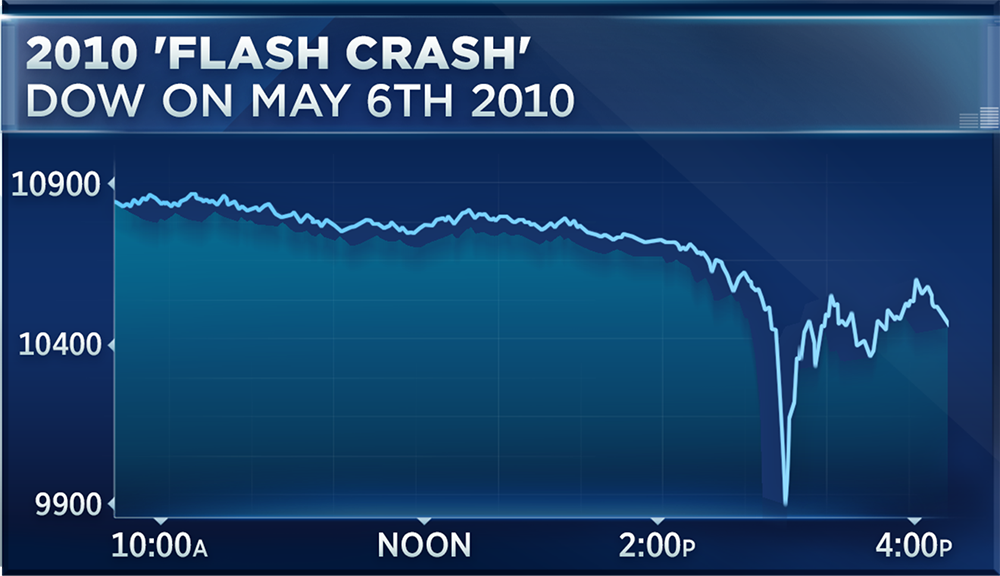Financial semiotics

On May 6, 2010, something went amiss in the United States stock market. Starting at 2:42 pm, prices on equity markets began to drop rapidly. Individuals, trading firms, pension funds all reacted panicky, selling into the crash, attempting to cut their losses, and within minutes, over a trillion dollars of value had vanished. Twenty minutes later, the market had bounced back – not to the levels it was half an hour earlier, but to a point where investors could stop thinking about impending doom.
Those with steady hands were barely affected. Some made money. Most active participants lost enough that it sparked conspiracy theories, academic research, congressional hearings, and several federal investigations.
Almost five years later, the Commodity Futures Trading Commission pinned it all on one man. It wasn't an over-leveraged hedge fund manager or a politically connected player doing insider trading, but a random guy trading out of his parents' house in London's edges. They argued that Navinder Sarao, using a home computer and a residential internet connection, created a maelstrom of panicked decisions that engulfed both professional fund managers and high-tech trading firms capable of taking bites out of the market in nanoseconds.
The crash will get its chapter, but, despite its title, Liam Vaughn's Flash Crash does not follow the event itself but Sarao.
The dubbed him The Hound of Hounslow. The picture that emerges through Flash Crash is not what you'd expect from the monicker. Nav Sarao is not the Wolf of Wall Street, some white-shoed Gordon Gecko-worshipping bro-suit, or table-pounding speechifying Boiler Room refugee.
Who he is, and why it's worth having 240 pages around the story of a guy clicking on a screen in a bedroom, I'll let you find out for yourself.
I'll say this: Nav sees systems.
He's not an engineer but a trader, someone who has to go to a programmer to create extensions to his usual platform. His e-mails are part of the public record, so we get to see the features he requested. These are straightforward rules, blindingly simple. He is asking for the financial equivalent of “for every step someone else takes, walk one step back” or “if I want to buy 12 items, and someone sells me just 1, cancel the other 11”. He intends to use these trivial rules to outsmart algorithms that make decisions in billionths of a second over connections that transfer information at the speed of light. If you didn't know you were reading a book about someone accused of causing the financial world to have a near-death experience, you would shake your head at their seeming naiveté.
He doesn't even mean these rules to be his trading heuristics – these features are only there to remove some clicks for him, help him interact faster with the markets. Nav is still in control of all decisions. It's almost impossible to see how these rules would help – even if you know a bit about finance and algorithms. The only way these would work is if Nav knew what multiple competing participants, who employed large teams of mathematicians and programmers, were doing behind the scenes.
And seemingly, he did.
Figuring out how a person like that processes reality, the possibilities of being capable of distilling a tangled process from the manifold of its signifiers, and how that can turn against him, will be what keeps you turning the pages.